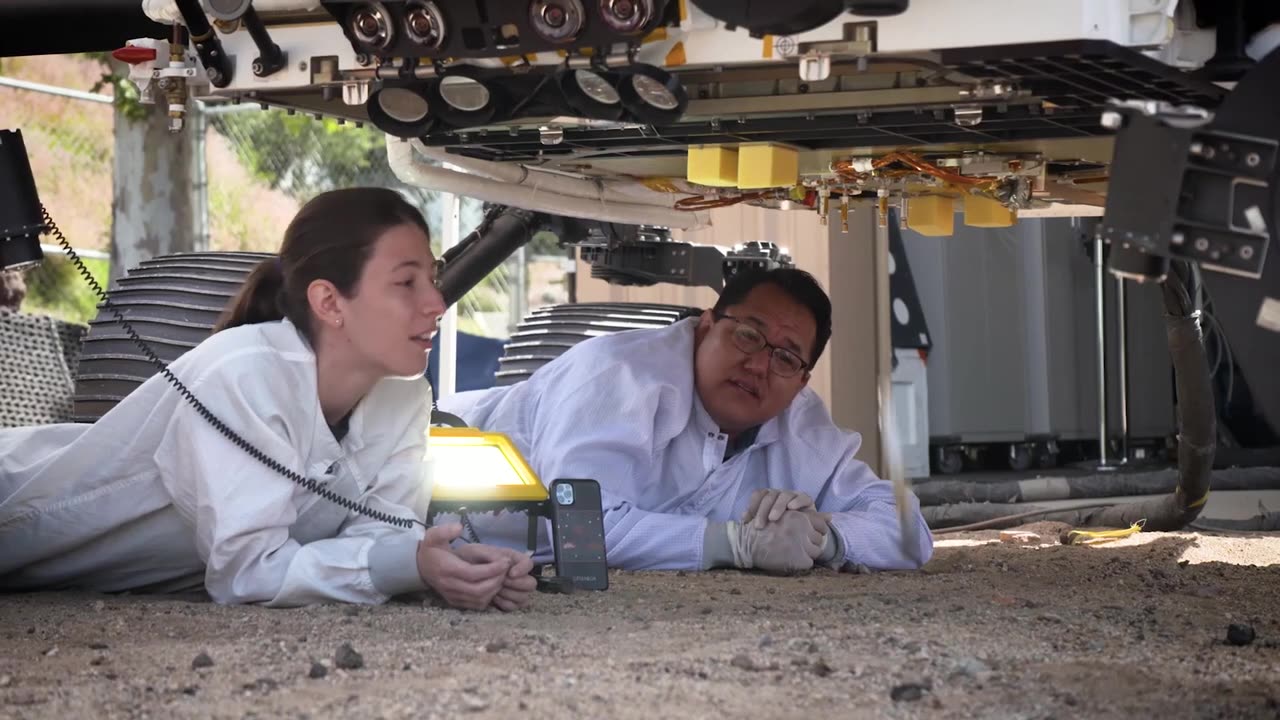Premium Only Content

How to Bring Mars Sample Tubes Safely to Earth
NASA’s Perseverance Mars rover is filling sample tubes with rocky material on the Red Planet as the agency works on the next steps to get them safely back to Earth.
The Mars Sample Return campaign would bring samples collected by the Perseverance rover to Earth for detailed study. The campaign involves an international interplanetary relay team, including the European Space Agency (ESA). These samples could answer a key question: did life ever exist on Mars?
Aaron Yazzie, who works on the Mars Sample Return campaign, explains the work being done at NASA’s Jet Propulsion Laboratory to ensure the safe return of the sample tubes.
Bringing Mars Sample Tubes Safely to Earth involves a meticulously planned and complex process to ensure the safe return of valuable Martian soil and rock samples. This endeavor, conducted by space agencies like NASA and ESA, comprises several critical steps:
Sample Collection: The first step is collecting samples from the Martian surface. This task typically involves a rover equipped with specialized instruments to gather rock and soil specimens.
Sample Sealing: Once collected, the samples are sealed within airtight containers to prevent any contamination from Earth and to maintain their integrity during the journey back.
Sample Storage: The sealed samples are stored safely on Mars until a return mission is launched. This storage may involve placing them on the surface or in orbit around Mars.
Return Vehicle: A dedicated spacecraft is designed for the sole purpose of bringing the samples back to Earth. This vehicle needs to be robust, well-shielded, and equipped with advanced navigation systems.
Launch from Mars: The return vehicle is launched from the Martian surface or Mars orbit, carrying the precious cargo of sealed sample containers.
Interplanetary Journey: The spacecraft embarks on a long interplanetary journey back to Earth, which may take several months to years, depending on the mission design.
Earth Entry and Landing: As the spacecraft approaches Earth, it must undergo a controlled entry into Earth's atmosphere. This phase generates intense heat, which necessitates a heat shield to protect the samples.
Parachute Descent: After surviving the fiery re-entry, the spacecraft deploys parachutes to slow its descent and ensure a gentle landing in a pre-designated recovery area, usually a remote location.
Recovery and Quarantine: Highly trained teams retrieve the spacecraft and samples. The samples are placed in secure, specialized facilities where they undergo rigorous quarantine and analysis to ensure they do not contain any harmful microorganisms.
Scientific Study: Once deemed safe, scientists begin the exciting task of studying the Martian samples. These precious materials can provide invaluable insights into the history of Mars, its potential for past life, and the planet's geology and climate.
The entire process is meticulously planned to minimize the risk of sample contamination and ensure the safe return of Mars samples, ultimately advancing our understanding of the Red Planet and the broader field of planetary science.
-
 18:14
18:14
Her Patriot Voice
4 hours agoWho Is WORSE for NYC: Trump Girl or Socialist?
10K21 -
 LIVE
LIVE
SavageJayGatsby
3 hours agoSpicy Saturday with Mally! | Road to 100 | $300 Weekly Goal for Spicy Bites!
1,132 watching -
 LIVE
LIVE
FomoTV
5 hours ago🚨 Swamp Theater: FBI Raids Bolton 🕵 Still NO Epstein Files, Trump's Troops & the Red Heifer Hoax 🐂 | Fomocast 08.23.25
69 watching -
 6:04:40
6:04:40
Akademiks
8 hours agoRoc Nation & Meg Thee Stallion did a 7 HOUR Deposition with me. Drake Secret Kid Finally Revealed.
45.1K1 -
 24:19
24:19
Stephen Gardner
4 hours ago🚨BREAKING: FBI Raid of John Bolton’s House Reveals THIS!
47.4K108 -
 8:31
8:31
MattMorseTV
6 hours ago $1.02 earnedTexas just did the IMPOSSIBLE.
35.2K57 -
 24:39
24:39
MYLUNCHBREAK CHANNEL PAGE
1 day agoInterdimensional Beings at Borobudur
46.4K27 -
 12:42
12:42
Scammer Payback
1 day agoCalling Scammers who were Raided
20.4K11 -
 23:31
23:31
IsaacButterfield
17 hours ago $0.08 earnedThe Woke Mob Is Really CANCELLING Matt Rife For THIS…
19.7K16 -
 1:23
1:23
WildCreatures
8 days ago $0.99 earnedThis mother armadillo eating her palm nuts is truly adorable
17.1K16